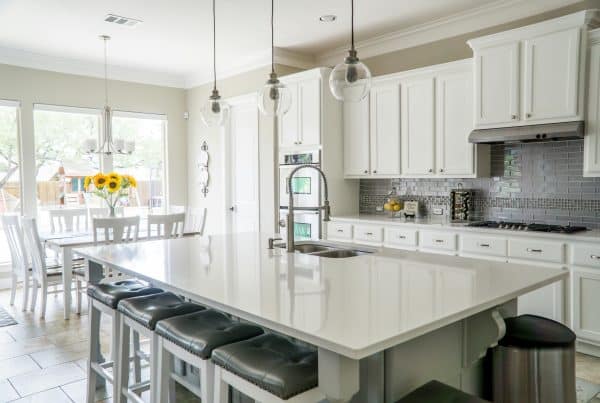The Las Vegas housing market presents unique challenges for buyers seeking affordable options, with properties under $300,000 becoming increasingly rare. Current inventory analysis reveals strategic opportunities in manufactured housing, outlying communities, and new construction developments that require specialized market knowledge and competitive positioning.
Las Vegas Housing Inventory Landscape: Under $300K Options
Manufactured Housing as Market Entry Point
Properties like 4217 Jadestone Avenue demonstrate the manufactured housing segment’s role in affordable homeownership. Listed at $289,000, this three-bedroom, two-bathroom home sits on a 7,000 square foot lot in Jade Park, offering 1,400 square feet of living space. The property represents converted real property status, eliminating traditional manufactured housing financing restrictions.
Jade Park’s established community infrastructure provides buyers with traditional neighborhood amenities while maintaining affordability. The 7,000 square foot lot size offers significantly more outdoor space than typical Las Vegas properties in similar price ranges, creating value beyond the home’s interior square footage.
Outlying Community Opportunities
Pahrump properties like 311 Inverice Avenue expand affordable options for buyers willing to consider location trade-offs. At $224,900, this two-bedroom, two-bathroom home with den offers 1,200 square feet on a 2,600 square foot lot in Desert Green, a 55-and-over community.
The age-restricted community structure appeals to specific buyer segments while limiting overall market competition. Properties in Pahrump provide ownership opportunities that simply don’t exist at comparable price points within Las Vegas proper, making location flexibility a critical factor in affordability discussions.
Traditional Housing Market Positioning
Properties like 6737 Divers Lon Street in Deer Springs represent the entry point for traditional housing options at $424,900. This single-story, three-bedroom, two-bathroom home offers 1,685 square feet with a two-car garage, built in 2006 in an established community off the 215 freeway.
The Deer Springs location provides convenient access to Las Vegas amenities while maintaining suburban community features. Properties in this price range compete directly with new construction options, requiring careful analysis of value propositions and buyer preferences.
New Construction Development Strategy
Large Lot Development Advantage
Current new construction projects focus on lot size differentiation as a competitive advantage. Properties featuring 8,000 square foot lots with 1,200-1,300 square foot homes at $329,000 provide buyers with outdoor space that established neighborhoods cannot match.
The development strategy recognizes that buyers prioritize outdoor living space and potential expansion opportunities. Eight-thousand square foot lots allow for pools, workshops, RV parking, and other amenities that smaller lots cannot accommodate, justifying premium pricing over comparable existing inventory.
Pahrump Market Positioning
Acre-plus properties in Pahrump offer dramatic value comparisons to Las Vegas equivalents. New construction featuring 1,650 square feet, three bedrooms, two-and-a-half bathrooms, and three-car garages on acre lots price under $400,000, compared to Las Vegas equivalent pricing exceeding $1,000,000.
These properties include premium features like deep garages accommodating multiple vehicles, water access, and enclosed front yard landscaping. The value proposition attracts buyers prioritizing space and amenities over proximity to urban centers.
Feature Differentiation Strategy
New construction projects emphasize unique features that existing inventory cannot provide. Six-car garage depth, specialized utility access, and custom lot preparation create differentiation beyond basic square footage comparisons.
The development approach recognizes that buyers compare total value rather than price per square foot alone. Premium features and lot characteristics justify pricing premiums while providing tangible benefits that resale properties cannot match.
Multiple Offer Market Dynamics
Competition Intensity Analysis
Current market conditions frequently generate 21 or more offers on desirable properties, fundamentally changing traditional negotiation dynamics. Analysis of typical offer pools reveals that approximately 10 offers receive immediate elimination due to poor presentation or unrealistic terms.
The remaining 15-plus offers typically involve financing, creating appraisal concerns that limit pure price competition. This dynamic forces buyers and their representatives to develop sophisticated strategies beyond simple price escalation.
Appraisal Risk Management
Multiple offer scenarios create appraisal gaps when winning offers exceed market value by significant margins. Buyers cannot simply escalate price without considering financing implications and gap coverage strategies.
Successful offer strategies must balance competitiveness with realistic appraisal expectations. Properties receiving multiple offers often appraise at or near list price, creating potential gaps for aggressive offers that buyers must be prepared to cover with cash.
Creative Offer Structuring
Beyond price competition, successful offers incorporate non-monetary concessions that appeal to sellers without creating appraisal risks. These include covering closing costs, title policies, transfer taxes, and escrow fees while maintaining competitive pricing.
The approach recognizes that sellers evaluate net proceeds rather than gross offer price. Buyers who structure offers to maximize seller net proceeds often win over higher-priced offers with traditional cost allocation.
Commission Structure Evolution
Buyer Agent Value Proposition
Recent commission structure changes pressure buyer agents to demonstrate clear value in competitive markets. When properties receive multiple offers, buyers may choose to cover their agent’s compensation to improve offer competitiveness.
This dynamic requires buyer agents to clearly articulate their value proposition through superior market knowledge, negotiation skills, and offer presentation quality. Agents who cannot demonstrate measurable value face increasing pressure in competitive scenarios.
Offer Presentation Quality
Professional offer presentation becomes critical when sellers evaluate multiple submissions. Clean, well-organized offers with appropriate contingencies and clear terms receive preference over confusing or poorly structured alternatives.
The presentation quality extends beyond paperwork to include agent reputation, communication skills, and transaction management capabilities. Sellers often choose offers from agents with proven closing track records over higher-priced offers from unknown representatives.
Market Adaptation Strategies
Successful agents adapt to commission changes by focusing on service differentiation and client education. This includes comprehensive market analysis, strategic timing recommendations, and creative problem-solving during negotiations.
Agents who view commission changes as opportunities to demonstrate value rather than threats to income position themselves for long-term success. Market evolution rewards expertise and results over traditional commission expectations.
Marketing and Syndication Considerations
Coming Soon Status Implications
Properties marketed as “coming soon” cannot receive MLS syndication to major real estate websites, limiting exposure compared to active listings. However, coming soon properties can accept offers and schedule showings, creating strategic timing opportunities.
The coming soon status allows sellers to gauge market interest and potentially generate multiple offers before full market exposure. Buyers working with knowledgeable agents gain access to inventory before broader market awareness.
Strategic Timing Advantages
Properties transitioning from coming soon to active status often generate immediate interest from buyers who missed the pre-market opportunity. This creates brief windows where motivated buyers may face less competition.
The timing strategy requires coordination between listing agents and buyer representatives to maximize opportunities while managing seller expectations. Success depends on accurate market timing and effective communication protocols.
Implementation Strategies for Market Professionals
Buyer Consultation Framework
Effective buyer consultation begins with realistic affordability analysis that includes location flexibility discussions. Buyers focused solely on Las Vegas proper may miss significant value opportunities in surrounding communities.
The consultation process should address property type education, particularly regarding manufactured housing financing and community restrictions. Many buyers eliminate viable options due to misconceptions about manufactured housing or age-restricted communities.
Competitive Positioning Protocol
Successful offer strategies require comprehensive market analysis beyond basic comparable sales. This includes recent offer patterns, seller motivation assessment, and appraisal risk evaluation for specific properties and price ranges.
The protocol should include backup offer strategies and alternative property identification. Multiple offer scenarios often result in failed transactions, creating opportunities for well-positioned backup offers.
Client Education Requirements
Buyers need education about current market realities, including competition levels, financing implications, and location trade-offs. Unrealistic expectations lead to frustration and missed opportunities in fast-moving markets.
Education should include specific examples of successful strategies and common mistakes to avoid. Buyers who understand market dynamics make better decisions and achieve superior outcomes.
Market Segment Analysis
Entry-Level Buyer Challenges
First-time buyers face particular challenges in current inventory conditions, with traditional starter homes priced beyond reach for many qualified purchasers. Manufactured housing and outlying communities provide pathways to ownership that may not align with initial preferences.
The challenge requires honest discussions about priority trade-offs and long-term wealth building through homeownership. Buyers who adjust expectations based on market realities achieve ownership while those maintaining rigid criteria often remain renters.
Move-Up Buyer Opportunities
Buyers with existing equity can leverage sale proceeds for competitive advantages in multiple offer scenarios. Cash-heavy offers or significant down payments reduce financing risks and appeal to sellers.
Move-up buyers also benefit from timing strategies that coordinate sale and purchase transactions. Successful coordination requires expert market knowledge and transaction management skills.
Investment Buyer Considerations
Investment buyers face different criteria than owner-occupants, focusing on rental potential, maintenance requirements, and appreciation prospects. Manufactured housing and outlying properties may offer superior investment returns despite location limitations.
Investment analysis should include rental market research, property management considerations, and exit strategy planning. Different property types require specialized investment evaluation approaches.
Risk Management and Decision Making
Location vs. Affordability Trade-offs
Buyers must carefully evaluate commute times, community amenities, and resale prospects when considering outlying properties for affordability. The decision involves lifestyle implications beyond simple cost comparisons.
Analysis should include transportation costs, time investments, and community development trends. Properties that seem affordable may carry hidden costs or limited appreciation potential.
Property Type Considerations
Manufactured housing offers affordability but may limit financing options and appreciation potential compared to traditional construction. Buyers need education about these implications before making commitments.
The decision requires understanding of community rules, land ownership vs. lease arrangements, and resale market characteristics. Professional guidance helps buyers make informed choices based on complete information.
Key Takeaways: Strategic Action Items
- Expand inventory searches to include manufactured housing and outlying communities for buyers prioritizing affordability over location
- Develop creative offer strategies beyond price escalation to compete effectively in multiple offer scenarios
- Focus on offer presentation quality and agent reputation as competitive advantages in saturated markets
- Educate buyers about commission structure changes and their impact on offer competitiveness
- Utilize coming soon marketing strategically to gauge interest and create competitive advantages
- Emphasize non-monetary concessions that improve seller net proceeds without creating appraisal risks
- Coordinate buyer expectations with market realities through comprehensive education and realistic goal setting
Frequently Asked Questions
What financing options exist for manufactured homes in Las Vegas?
Manufactured homes on permanent foundations with real property status qualify for traditional mortgage financing. Properties in established communities like Jade Park often convert to real property, eliminating financing restrictions common with manufactured housing.
How do Pahrump properties compare to Las Vegas equivalents for investment purposes?
Pahrump properties offer significantly lower entry costs but may have limited rental markets and slower appreciation rates. Investment analysis should include rental demand research and exit strategy planning specific to outlying communities.
What strategies work best in multiple offer situations without overpaying?
Focus on non-price concessions like covering seller closing costs, providing flexible closing timelines, and submitting clean offers with minimal contingencies. Professional offer presentation and agent reputation also influence seller decisions.
How do coming soon listings provide competitive advantages for buyers?
Coming soon properties allow early access before broad market exposure, potentially reducing competition. Buyers working with well-connected agents can view and offer on properties before they reach active status and attract multiple offers.
What factors should buyers consider when evaluating manufactured housing?
Evaluate community stability, land ownership vs. lease arrangements, financing options, and resale prospects. Properties with real property status in established communities often provide better long-term value than traditional manufactured housing.
How do commission changes affect buyer representation in competitive markets?
Buyers may need to cover their agent’s compensation to improve offer competitiveness. This requires agents to demonstrate clear value through superior market knowledge, negotiation skills, and successful transaction management.
What location trade-offs make sense for first-time buyers in Las Vegas?
Consider communities like Pahrump for dramatic cost savings, manufactured housing in established areas for moderate savings, or new construction with large lots for premium features. Each option requires evaluation of commute times and lifestyle implications.
How should sellers evaluate multiple offers beyond price alone?
Consider net proceeds after all costs, buyer financing strength, closing timeline flexibility, and agent reputation. Higher-priced offers with weak financing or poor representation may create transaction risks.
What market timing strategies work for coordinating sale and purchase transactions?
Plan for coming soon marketing to gauge interest, coordinate closing timelines with purchase opportunities, and maintain backup options for both transactions. Professional coordination prevents gaps in housing or lost opportunities.
How do new construction projects compete with existing inventory in current markets?
Emphasize unique features like large lots, custom amenities, and modern construction that existing properties cannot match. Position value proposition based on total lifestyle benefits rather than price per square foot comparisons.






